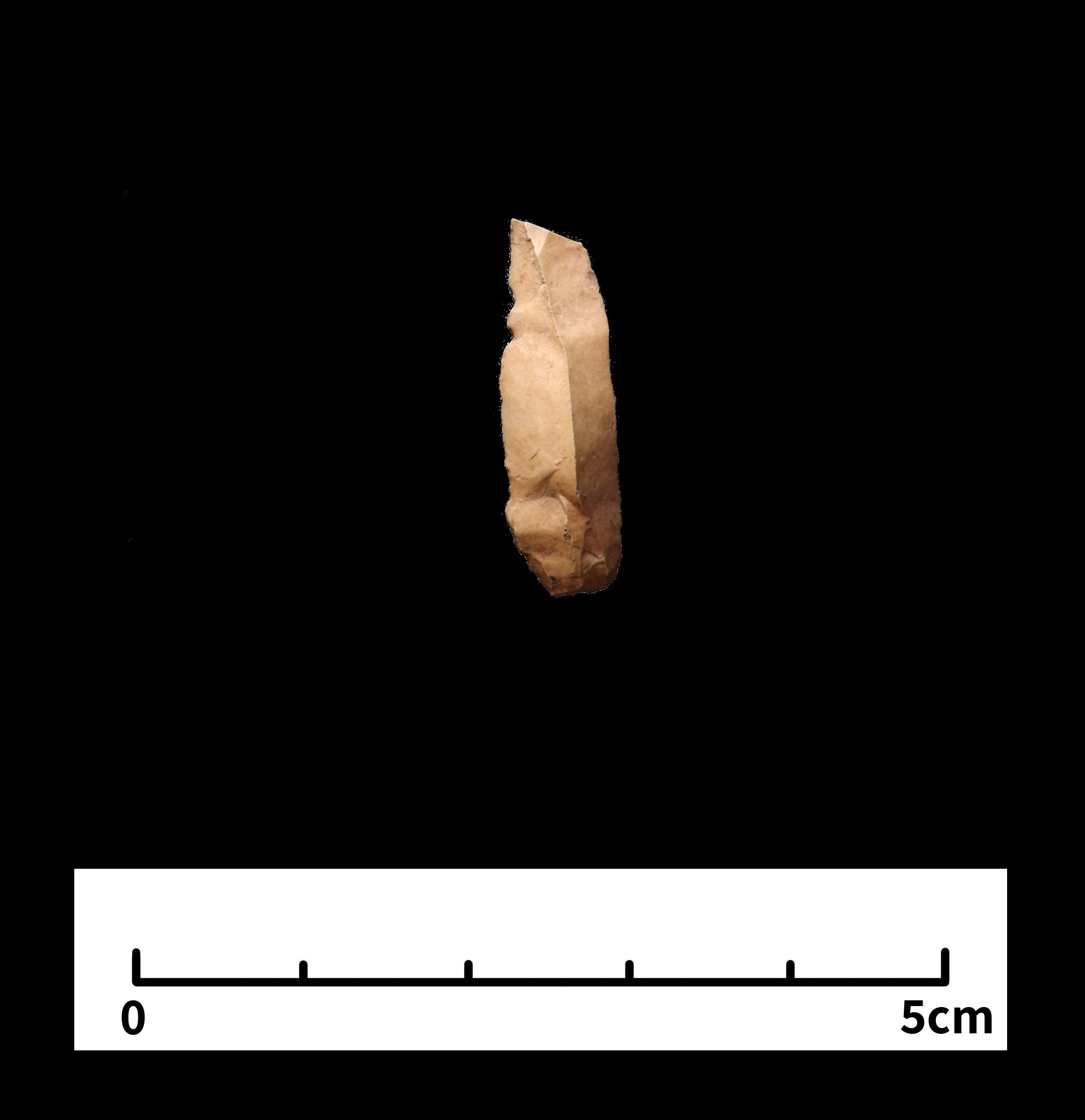Kostenki 17 retouched bladelet
Dufour bladelet (Dufour subtype), 41,000 years old
Kostënki 17 is among the most important archaeological sites for understanding the very first modern humans in Eastern Europe. Primarily excavated by P.I. Boriskovskii in 1953 and 1955, the site’s lower layer contained a rich archaeological assemblage of worked flint and bone, pendants and animal bones.
The site’s lithic assemblage is dominated by burin-cores that have been worked to create bladelets with straight profiles. We know that at least some of these bladelets were further shaped (retouched) for use. Two bladelets from the site have been retouched into a type referred to as “Dufour-type” bladelets (so-called after the French site of Grotte Dufour), including this one. This tool type is especially important for understanding the link between sites, and has been found on sites of this age across Europe and beyond. It is currently thought that these bladelets were part of a multi-component hunting kit.
(Artefact housed at the Institute for the History of Material Culture [Palaeolithic Division], Saint Petersburg.)








